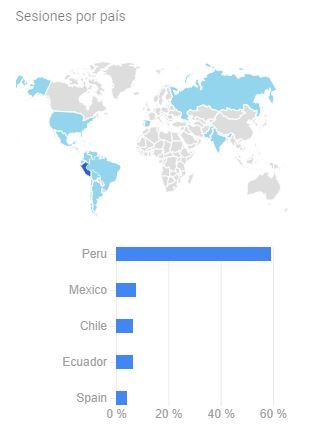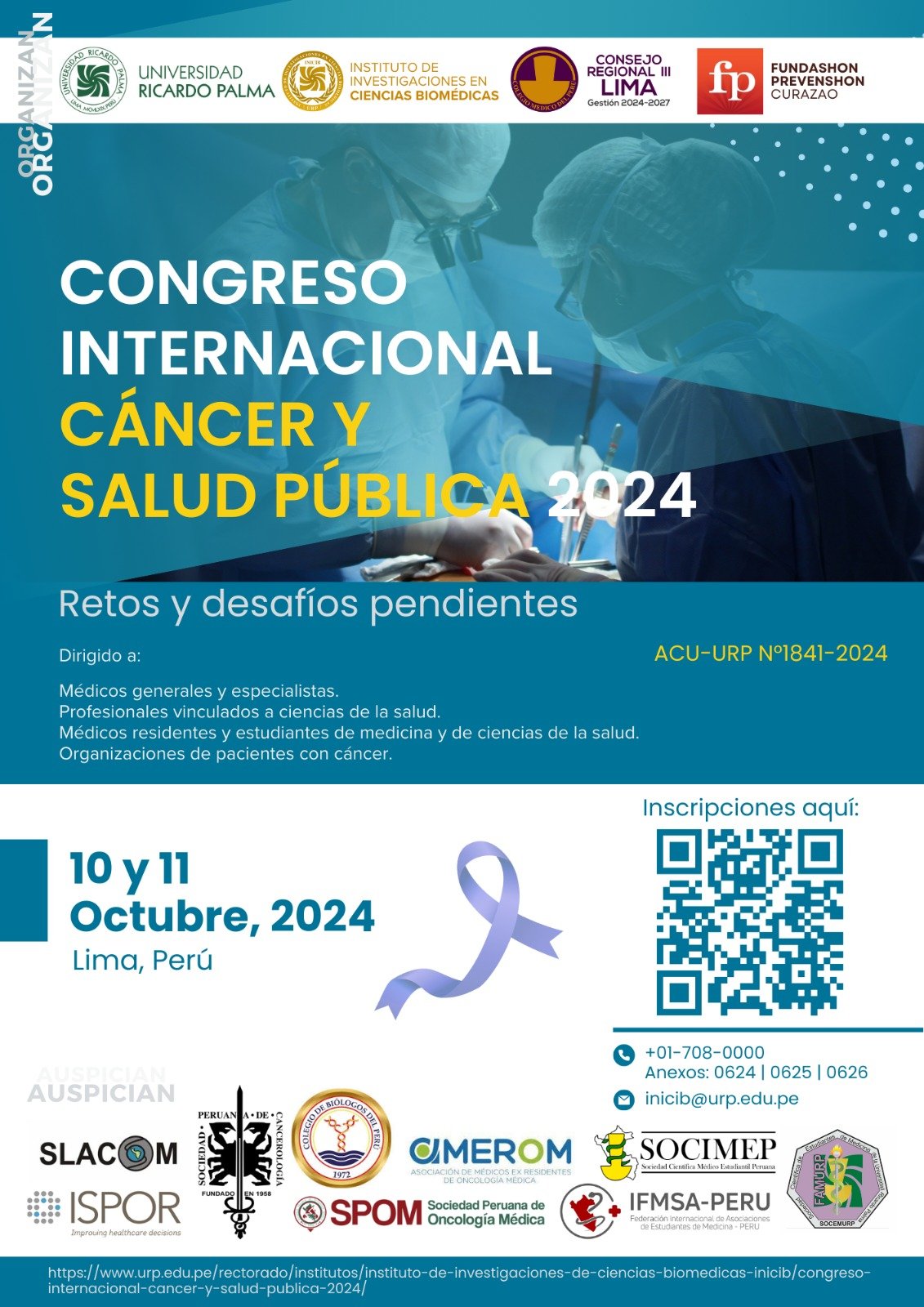Prognostic capacity of D-dimer in predicting mortality in patients diagnosed with COVID-19
Capacidad pronóstica del dimero D en la predicción de mortalidad en pacientes con el diagnóstico de COVID-19
DOI:
https://doi.org/10.25176/RFMH.v24i2.6558Keywords:
COVID-19, SARS-CoV-2, Mortality, Fibrin-Fibrinogen Degradation ProductsAbstract
Abstract
Introduction: SARS-CoV-2 infection can produce a hypercoagulable state and increase the risk of developing thrombotic events. Several observational studies have reported an association between D-dimer levels on admission and mortality from COVID-19.
Objective: The objective of the present study was to determine the prognostic capacity of D-dimer in predicting mortality from COVID-19 in patients hospitalized in the Intensive Care Unit.
Methods: An observational, analytical and retrospective cohort design was used. A sample size of 324 hospitalized patients was calculated, who were followed during the period January to July 2021 to evaluate the outcome of disease. For statistical analysis, the SPSS version 26 statistical package was used.
Results: A cut-off point of 1.40 µg/mL was calculated for D-dimer values with a sensitivity of 80.9%, a specificity of 86.4% and area under the curve (AUC) of 0.916 (CI 95%: 0.884 – 0.947; p =0.016) to predict mortality from COVID-19. Likewise, it was found that patients with D-dimer values greater than or equal to 1.40 µg/mL had an increased risk of mortality in patients with COVID-19 (HRa = 6.545; 95% CI: 3.867 – 11.077; p<0.001), independent of the variables of age, diabetes mellitus, arterial hypertension, ischemic heart disease, cerebrovascular disease, atrial fibrillation, chronic obstructive pulmonary disease, asthma, cancer and thrombocytopenia.
Conclusions: The present study showed that D-dimer levels on admission represent a reliable biomarker in the evaluation of the prognosis of patients with COVID-19.
Downloads
References
Machhi J, Herskovitz J, Senan AM, Dutta D, Nath B, Oleynikov MD, et al. The Natural History, Pathobiology, and Clinical Manifestations of SARS-CoV-2 Infections. J Neuroimmune Pharmacol. 2020; 15(3):359-386. doi: 10.1007/s11481-020-09944-5.
Guan WJ, Ni ZY, Hu Y, Liang WH, Ou CQ, He JX, et al. Clinical Characteristics of Coronavirus Disease 2019 in China. N Engl J Med. 2020; 382(18):1708-1720. doi: 10.1056/NEJMoa2002032.
Gupta A, Madhavan MV, Sehgal K, Nair N, Mahajan S, Sehrawat TS, et al. Extrapulmonary manifestations of COVID-19. Nat Med. 2020; 26(7):1017-1032. doi: 10.1038/s41591-020-0968-3.
Cui S, Chen S, Li X, Liu S, Wang F. Prevalence of venous thromboembolism in patients with severe novel coronavirus pneumonia. J Thromb Haemost. 2020; 18(6):1421-1424. doi: 10.1111/jth.14830.
Klok F, Kruip M, van der Meer N, Arbous M, Gommers D, Kant K, et al. Incidence of thrombotic complications in critically ill ICU patients with COVID-19. Thromb Res. 2020; 191(1) :145-147. doi: 10.1016/j.thromres.2020.04.013.
Bangalore S, Sharma A, Slotwiner A, Yatskar L, Harari R, Shah B, et al. ST-Segment Elevation in Patients with Covid-19 - A Case Series. N Engl J Med. 2020; 382(25):2478-2480. doi: 10.1056/NEJMc2009020.
Lodigiani C, Iapichino G, Carenzo L, Cecconi M, Ferrazzi P, Sebastian T, et al. Venous and arterial thromboembolic complications in COVID-19 patients admitted to an academic hospital in Milan, Italy. Thromb Res. 2020; 191:9-14. doi: 10.1016/j.thromres.2020.04.024.
Nahum J, Morichau-Beauchant T, Daviaud F, Echegut P, Fichet J, Maillet JM, et al. Venous Thrombosis Among Critically Ill Patients With Coronavirus Disease 2019 (COVID-19). JAMA Netw Open. 2020; 3(5):e2010478. doi: 10.1001/jamanetworkopen.2020.10478.
Moschonas IC, Tselepis AD. SARS-CoV-2 infection and thrombotic complications: a narrative review. J Thromb Thrombolysis. 2021 Jul;52(1):111-123. doi: 10.1007/s11239-020-02374-3.
Wool GD, Miller JL. The Impact of COVID-19 Disease on Platelets and Coagulation. Pathobiology. 2021;88(1):15-27. doi: 10.1159/000512007.
Spyropoulos A, Crawford J, Chen Y, Ashton V, Campbell AK, Milentijevic D, et al. Occurrence of Thromboembolic Events and Mortality Among Hospitalized Coronavirus 2019 Patients: Large Observational Cohort Study of Electronic Health Records. TH Open. 2022; 6(4):e408-e420. doi: 10.1055/a-1937-9692.
Chen S, Zheng T, Wang S, Yu Y, Wang P, Song Y, et al. Association between risk of venous thromboembolism and mortality in patients with COVID-19. Int J Infect Dis. 2021; 108:543-549. doi: 10.1016/j.ijid.2021.06.005.
Chocron R, Duceau B, Gendron N, Ezzouhairi N, Khider L, Trimaille A, et al. D-dimer at hospital admission for COVID-19 are associated with in-hospital mortality, independent of venous thromboembolism: Insights from a French multicenter cohort study. Arch Cardiovasc Dis. 2021; 114(5):381-393. doi: 10.1016/j.acvd.2021.02.003.
Zhang L, Yan X, Fan Q, Liu H, Liu X, Liu Z, et al. D-dimer levels on admission to predict in-hospital mortality in patients with Covid-19. J Thromb Haemost. 2020 Jun;18(6):1324-1329. doi: 10.1111/jth.14859.
Wool GD, Miller JL. The Impact of COVID-19 Disease on Platelets and Coagulation. Pathobiology. 2021;88(1):15-27. doi: 10.1159/000512007.
Simadibrata DM, Lubis AM. D-dimer levels on admission and all-cause mortality risk in COVID-19 patients: a meta-analysis. Epidemiol Infect. 2020; 148:e202. doi: 10.1017/S0950268820002022.
STROBE. Checklists – STROBE [Internet]. 2023. Disponible en: https://www.strobe-statement.org/checklists/
Nemec HM, Ferenczy A, Christie B, Ashley DW, Montgomery A. Correlation of D-dimer and Outcomes in COVID-19 Patients. Am Surg. 2022; 88(9):2115-2118. doi: 10.1177/00031348221091940.
Nasif W, El-Moursy A, Hasan M, Alhuzali A, Yahya A, Ahmed G, et al. Elucidating the Correlation of D-Dimer Levels with COVID-19 Severity: A Scoping Review. Anemia. 2022; 8 :9104209. doi: 10.1155/2022/9104209.
Varikasuvu SR, Varshney S, Dutt N, Munikumar M, Asfahan S, Kulkarni PP, et al. D-dimer, disease severity, and deaths (3D-study) in patients with COVID-19: a systematic review and meta-analysis of 100 studies. Sci Rep. 2021;11(1):21888. doi: 10.1038/s41598-021-01462-5.
Poudel A, Poudel Y, Adhikari A, Aryal BB, Dangol D, Bajracharya T, et al. D-dimer as a biomarker for assessment of COVID-19 prognosis: D-dimer levels on admission and its role in predicting disease outcome in hospitalized patients with COVID-19. PLoS One. 2021; 16(8):e0256744. doi: 10.1371/journal.pone.0256744.
Soni M, Gopalakrishnan R, Vaishya R, Prabu P. D-dimer level is a useful predictor for mortality in patients with COVID-19: Analysis of 483 cases. Diabetes Metab Syndr. 2020; 14(6):2245-2249. doi: 10.1016/j.dsx.2020.11.007.
Tang N., Bai H., Chen X., Gong J., Li D., Sun Z. Anticoagulant treatment is associated with decreased mortality in severe coronavirus disease 2019 patients with coagulopathy. J Thromb Haemost. 2020;18(5):1094–1099. doi: 10.1111/jth.14817.
Cidade JP, Coelho L, Costa V, Morais R, Moniz P, Morais L, et al. Predictive value of D-dimer in the clinical outcome of severe COVID19 patients: Are we giving it too much credit? Clin Appl Thromb Hemost. 2022; 28:10760296221079612. doi: 10.1177/10760296221079612.
He X, Yao F, Chen J, Wang Y, Fang X, Lin X, et al. The poor prognosis and influencing factors of high D-dimer levels for COVID-19 patients. Sci Rep. 2021; 11(1):1830. doi: 10.1038/s41598-021-81300-w.
Parra-Medina R, Herrera S, Mejia J. Systematic Review of Microthrombi in COVID-19 Autopsies. Acta Haematol. 2021;144(5):476-483. doi: 10.1159/000515104.

Downloads
Published
How to Cite
Issue
Section
License
Copyright (c) 2024 Revista de la Facultad de Medicina Humana

This work is licensed under a Creative Commons Attribution 4.0 International License.



































